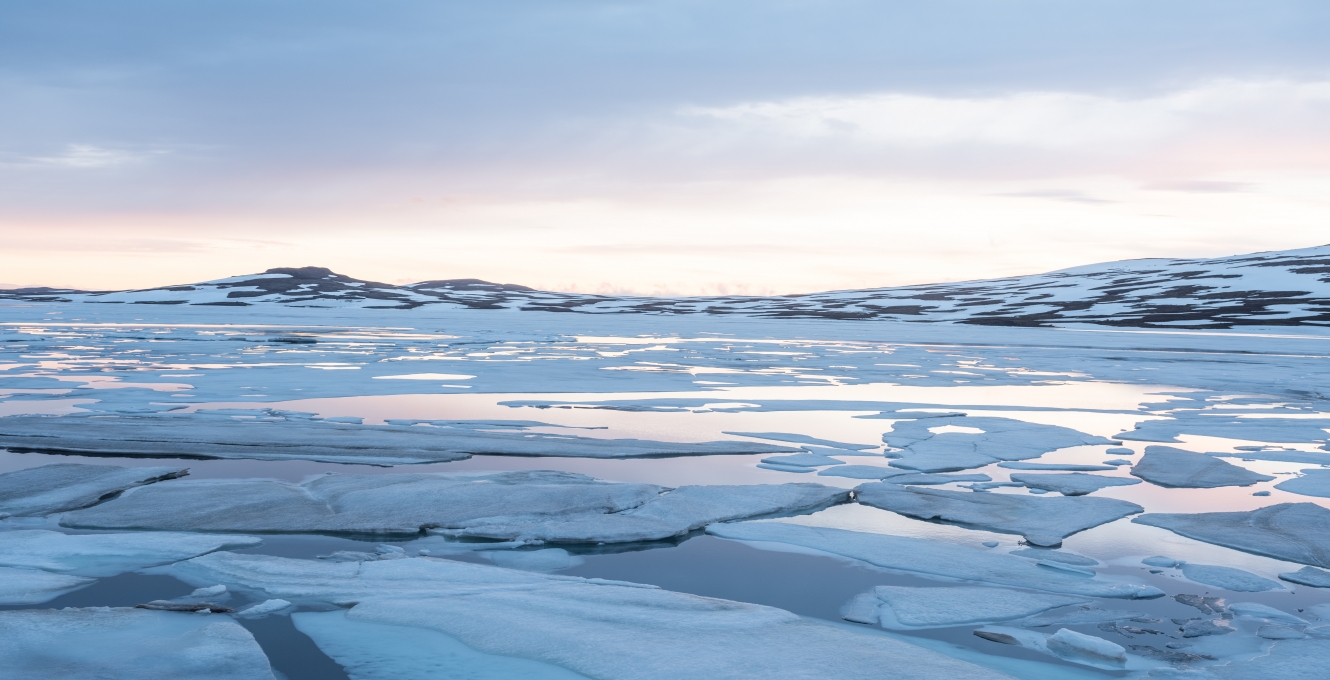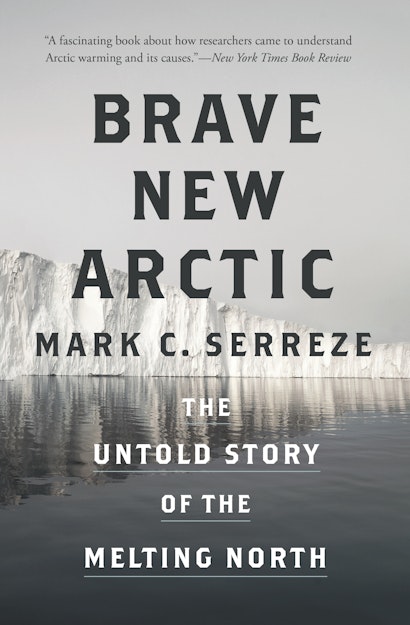In the 1990s, researchers in the Arctic noticed that floating summer sea ice had begun receding. This was accompanied by shifts in ocean circulation and unexpected changes in weather patterns throughout the world. The Arctic’s perennially frozen ground, known as permafrost, was warming, and treeless tundra was being overtaken by shrubs. What was going on? Brave New Arctic is Mark Serreze’s riveting firsthand account of how scientists from around the globe came together to find answers. A gripping scientific adventure story, Brave New Arctic shows how the Arctic’s extraordinary transformation serves as a harbinger of things to come if we fail to meet the challenge posed by a warming Earth.
Why should we care about what is going on in the Arctic?
The Arctic is raising a red flag. The region is warming twice as fast as the globe as a whole. The Arctic Ocean is quickly losing its summer sea ice cover, permafrost is thawing, glaciers are retreating, and the Greenland ice sheet is beginning to melt down. The Arctic is telling us that climate change is not something out there in some vague future. It is telling us that it is here and now, and in a big way. We long suspected that as the climate warms, the Arctic would be leading the way, and this is exactly what has happened.
There are a lot of books out there on the topic of climate change. What makes this one different and worth reading?
I wanted to get across how science is actually done. Scientists are trained to think like detectives, looking for evidence, tracking down clues, and playing on hunches. We work together to build knowledge, and stand on the shoulders of those who came before us. It a noble enterprise, but a very human one as well. We sometimes make mistakes (I’ve made a few doozies in my time) and get off the rails. Too often, science gets twisted up with politics. I tell it like it is, as a climate scientist who was there back when the Arctic was just beginning to stir, and both watched and participated in the story of the changing north.
You’ve hinted about how growing up in Maine got you interested in snow and ice. Can you tell us a little about this?
I grew up in coastal Maine in the 1960s and 1970s when there were some pretty impressive winters. Winter was my favorite season. I was way into daredevil sledding, and spent countless hours building the iciest, slickest track possible and modifying my sled for maximum speed. I developed a reputation for building tremendous snow forts with five or six rooms connected by tunnels. We’d would go crawling through the tunnels at night and light candles in each room. Then there was the simple primal joy of watching a big Nor’easter snowstorm come through and grind commerce to halt. The craziest winter activity I got into with my sister Mary and friend Dave was riding ice floes on the Kennebunk River. I probably should have drowned several times over, but, in retrospect, I learned a lot about the behavior of floating ice. Now, this was all back in an era when most of us were free-range kids—my mom would say, “get out of the house, I don’t want to see you ‘til dinner.” So you made your own fun and it wasn’t always safe. But it prepared me very well for a career studying snow and ice.
It took you quite a few years to be convinced of a human role in climate change. Why so long?
As mentioned, scientists are detectives, and we are always weighing the evidence. For me, it was never a question of if we would eventually see the human imprint of climate change in the Arctic—the basic physics behind greenhouse warming had been understood as far back as the late 19th century. Rather, it was a question of whether the evidence was solid enough to say that the imprint had actually emerged. The challenge we were up against is that natural variability is quite strong in the Arctic, the system is very complex, and most of the climate records we had were rather short. By the late 1990s, it was clear that we were seeing big changes, but at least to me, a lot of it still looked like natural variability. It was around the year 2002 or 2003 that the evidence became so overwhelming that I had to turn. So, I was a fence sitter for a long time on the issue of climate change, but that is how science should work. We are trained to be skeptical.
What happened in the year 2007? Can you summarize?
In the early summer of 2007, sea ice extent was below average, but this didn’t really grab anyone’s attention. That quickly changed when ice started disappearing at a pace never seen before. Through July and August, it seemed that the entire Arctic sea ice community was watching the daily satellite images with a growing sense of awe and foreboding. Huge chunks of the ice were getting eaten away. By the middle of September, when it was all over, the old record low for sea ice hadn’t just been beaten, it had been blown away. There was no longer any doubt that a Brave New Arctic was upon us. Arctic climate science was never really the same after that.
We keep hearing about how science tends to be a male-dominated field. But the impression that one gets from your book is that this isn’t really the case in climate research. Can you comment?
I don’t know what the actual numbers look like in climate science versus, say, computer science, but in my experience, when it comes climate research, nobody really cares about your gender. What’s important is what you know and what you can contribute. What you do see, certainly, is more female graduate students now coming through the system in STEM fields (Science, Technology, Education, Mathematics).
Are you frustrated by the general inaction, at least in the United States, to deal with climate change?
I’m constantly amazed that we don’t take the issue of climate change more seriously in this country. We are adding greenhouse gases to the air. The climate is warming as a result. The physics are well understood. Just as expected, the Arctic is leading the way. Sure, there are uncertainties regarding just how warm it well get, how much sea level will rise, and changes in extreme events, but we know plenty about what is happening and where we are headed. The costs of inaction are going to far outweigh the costs of addressing this issue.
Mark C. Serreze is director of the National Snow and Ice Data Center, professor of geography, and a fellow of the Cooperative Institute for Research in Environmental Sciences at the University of Colorado at Boulder. He is the coauthor of The Arctic Climate System. He lives in Boulder, Colorado.

